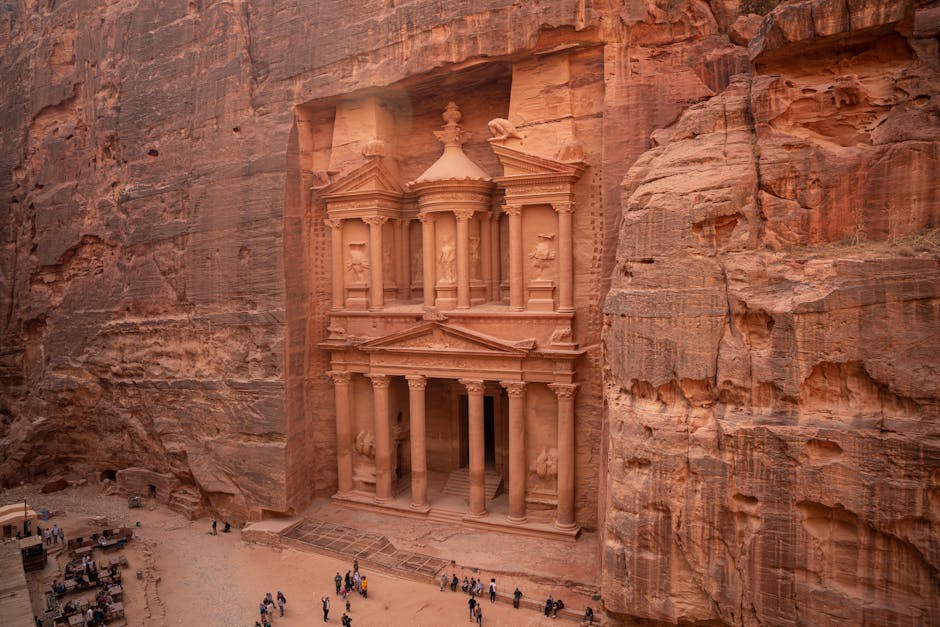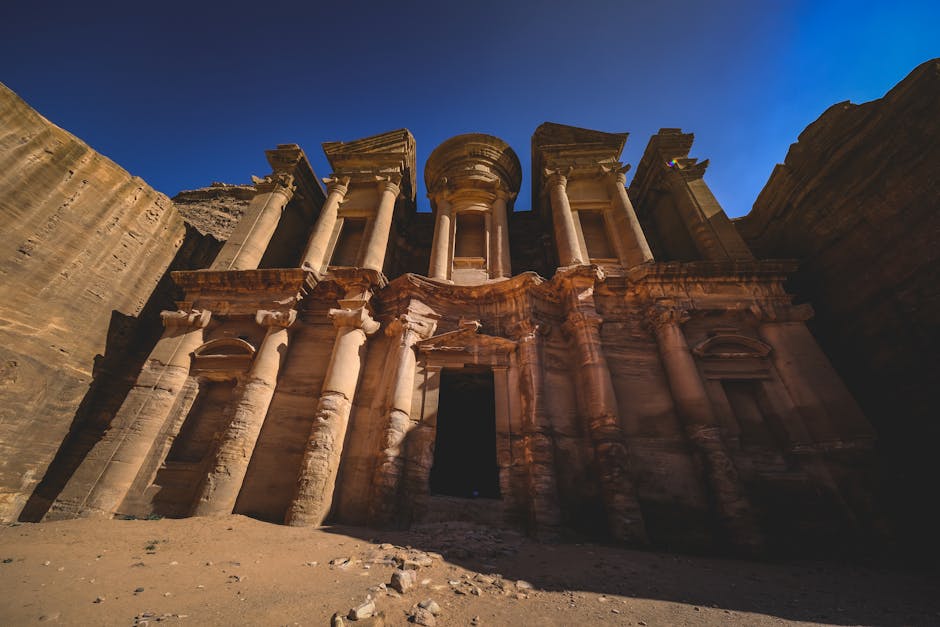Wandering Through the Ancient Ruins of Petra, Jordan
Petra, the ancient city carved into rose-red cliffs, stands as one of Jordan’s most captivating historical treasures. Hidden for centuries, this iconic archaeological site is a testament to the ingenuity of the Nabataeans who built it more than 2,000 years ago. As visitors wander through Petra's stone-carved passageways and towering facades, they are greeted with breathtaking remnants of temples, tombs, and intricate architectural feats. The significance of Petra goes beyond its beauty; it was once a bustling trade hub connecting major civilizations from the Mediterranean to the Arabian Peninsula.

The Historical Significance of Petra
Petra's history stretches back to around 400 BCE when the Nabataean civilization established it as their capital. They were master traders, dominating routes that connected the East and West. Petra's strategic location enabled them to control vital trade routes that transported spices, silk, and incense. Over time, the city thrived not only as a commercial center but also as a cultural melting pot, where influences from Greece, Rome, and local Bedouin tribes merged.
The Roman Empire eventually annexed Petra in 106 CE, further enhancing its infrastructure with Roman-style architecture such as colonnaded streets and public buildings. Despite its prosperity, by the Byzantine period, Petra began to decline due to changes in trade routes and natural disasters like earthquakes. By the 7th century CE, Petra had largely been abandoned and was forgotten by much of the outside world until it was rediscovered in 1812 by Swiss explorer Johann Ludwig Burckhardt.
The city's inclusion as a UNESCO World Heritage Site in 1985 cemented its global significance. In addition to being one of Jordan’s most visited tourist destinations, Petra was also named one of the New Seven Wonders of the World in 2007, an accolade that reflects its enduring appeal and importance.
Must-See Highlights of Petra
Exploring Petra can be overwhelming given its vastness and the sheer number of remarkable sites. The journey into Petra begins at the Siq, a narrow gorge flanked by towering rock walls that stretch up to 80 meters high. This dramatic entrance stretches for about 1.2 kilometers and sets the tone for what lies ahead.
- The Treasury (Al-Khazneh): Perhaps the most iconic symbol of Petra, this majestic structure stands at the end of the Siq. Carved directly into sandstone cliffs, it is believed to have been either a royal tomb or a temple. Its ornate façade is particularly impressive at sunrise when the light casts a golden hue over the red stone.
- The Monastery (Ad-Deir): Located at the end of a challenging uphill trail with over 800 steps, Ad-Deir rewards visitors with panoramic views of the surrounding mountains. Larger than even The Treasury, this monumental building is believed to have served religious purposes.
- The Royal Tombs: A series of intricately carved tombs overlooking the main valley of Petra. These include the Urn Tomb, Silk Tomb, Corinthian Tomb, and Palace Tomb, all displaying different styles but equally awe-inspiring in their grandeur.
Other notable sites within Petra include The Great Temple Complex and The Colonnaded Street, reminders of both Nabataean achievements and Roman influence on urban design.
Exploring Beyond the Main Trail
While most visitors stick to well-trodden paths leading to The Treasury and The Monastery, venturing off these routes reveals quieter corners of Petra filled with hidden gems. For those seeking solitude or deeper exploration into Nabataean culture, there are several lesser-known trails worth considering.

The High Place of Sacrifice trail offers stunning vistas across Petra’s valley and winds through less crowded areas filled with ancient altars used for religious ceremonies. From here, you can descend toward Wadi Farasa where more tombs and carvings await discovery.
Another rewarding path is the Al Madras trail which provides an alternative perspective on The Treasury from above, a view that fewer tourists experience but offers an unparalleled vantage point over one of Petra’s most iconic structures.
For those interested in geology or simply marveling at nature's artistry alongside human craftsmanship, exploring Petra’s colorful sandstone formations is also worthwhile. Known as “Petra’s Rainbow,” these swirling patterns are visible throughout different parts of the city but are especially striking along some lesser-known paths like Little Petra (Siq al-Barid).
Practical Tips for Visiting Petra
A visit to Petra is no small feat (it involves plenty of walking under Jordan's intense sun) so preparation is key for maximizing your experience while ensuring comfort throughout your stay.
| Tip | Details |
|---|---|
| Timing Your Visit | The early morning or late afternoon offers fewer crowds and cooler temperatures. Additionally, visiting during spring (March-May) or autumn (September-November) provides pleasant weather conditions. |
| Stay Hydrated | Given Jordan's arid climate, carrying water is essential, especially since shaded areas are limited within Petra itself. |
| Footwear | Wear comfortable shoes suited for hiking as many trails within Petra involve uneven terrain or steep inclines (e.g., The Monastery). |
| Tours & Guides | Hiring a licensed guide can provide deeper insight into both historical context and hidden parts within Petra you might otherwise miss on your own. |
| Petra By Night | An unforgettable experience held three nights per week where The Siq and Treasury are illuminated by candlelight while traditional Bedouin music fills the air, a magical way to see another side of Petra. |
The Impact of Tourism on Preservation Efforts
With an increasing number of visitors every year (around one million annually) concerns about preserving Petra’s delicate structures have grown significantly among archaeologists and conservationists alike. Heavy foot traffic combined with environmental factors like rainwater erosion poses challenges in maintaining this UNESCO site.
Sustainable tourism practices are critical if future generations are to appreciate this ancient wonder without further damaging its fragile sandstone architecture. Local initiatives emphasize responsible tourism through educational programs aimed at encouraging visitors not only to respect but actively contribute toward preservation efforts during their stay in Jordan.
Additionally, partnerships between Jordanian authorities and international organizations continue working towards restoration projects focusing on reinforcing weakened structures while ensuring accessibility for future generations remains intact without compromising heritage integrity.
The ruins stand as not just remnants from centuries past but living reminders urging us all toward respectful engagement with such irreplaceable human achievements before they're lost forever under modern pressures like climate change or unchecked tourism expansion.
As you step away from Petra’s grand facades back into today's modern world filled with conveniences unimaginable during its heyday (it’s hard not reflecting upon how advanced yet fleeting great civilizations truly are) even those who seemed unshakable eventually succumbed against time itself leaving behind only traces telling part stories still unfolding today beneath desert sands whispering secrets awaiting curious souls willing enough listening closely enough…